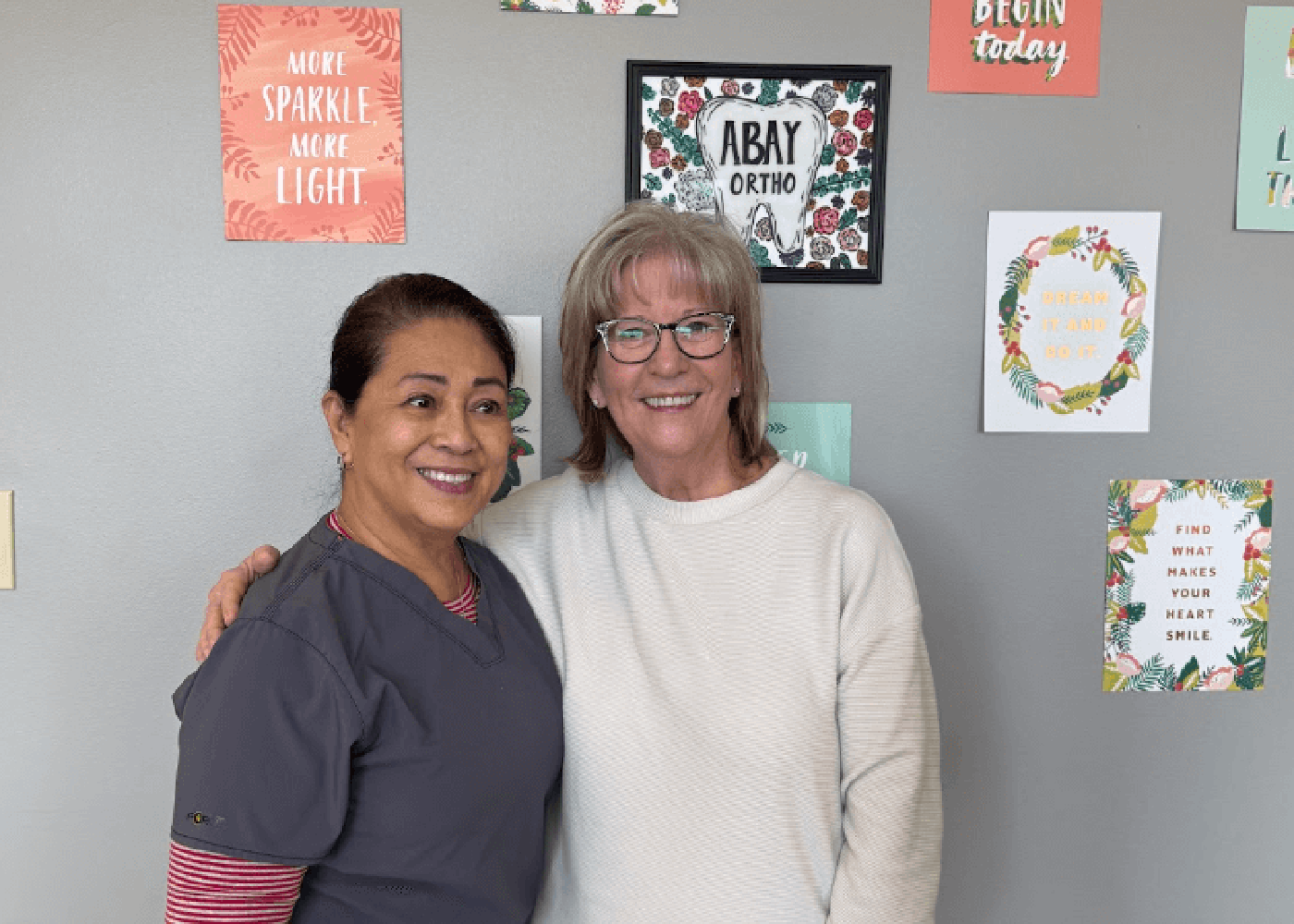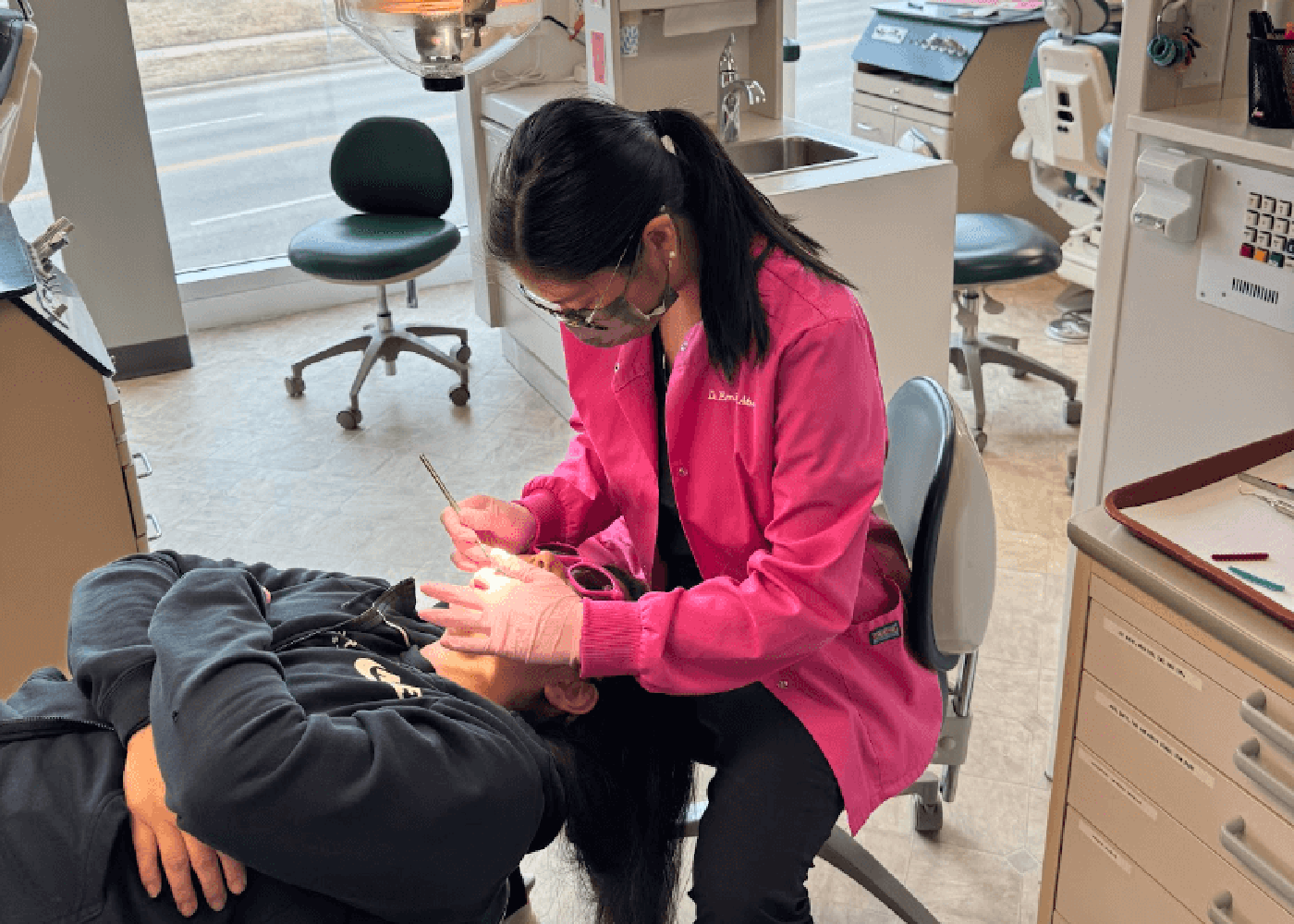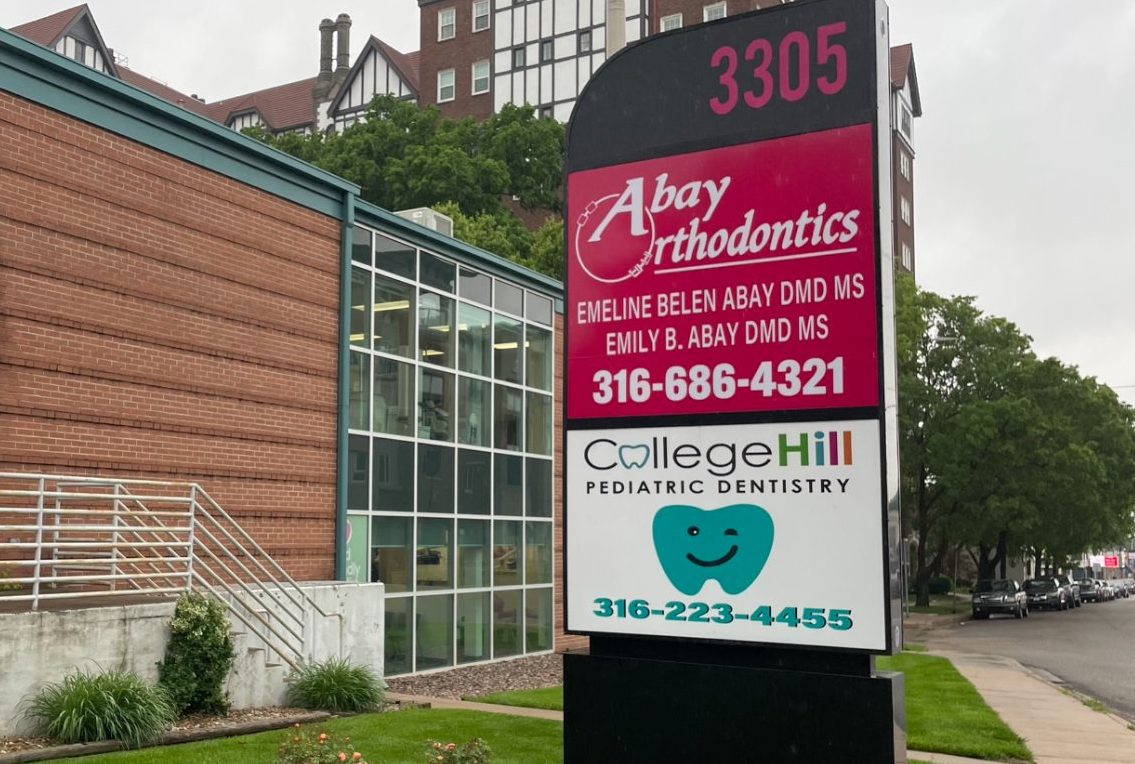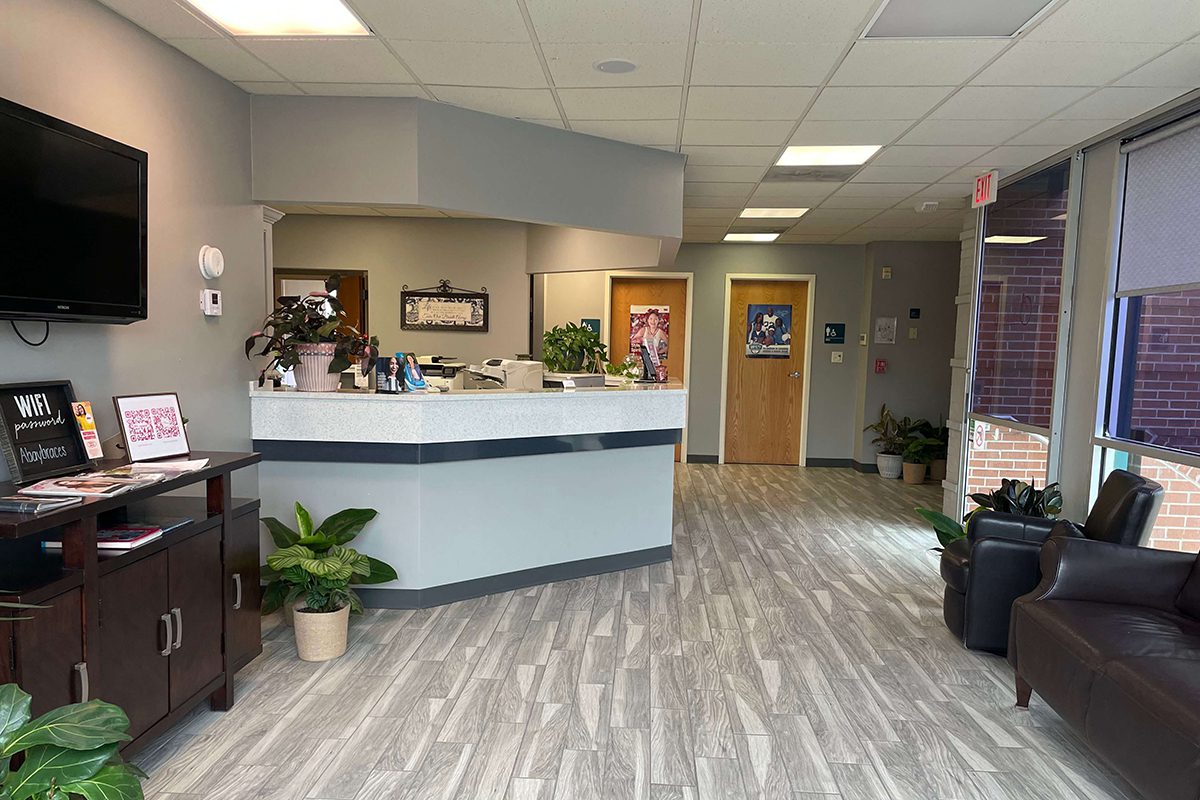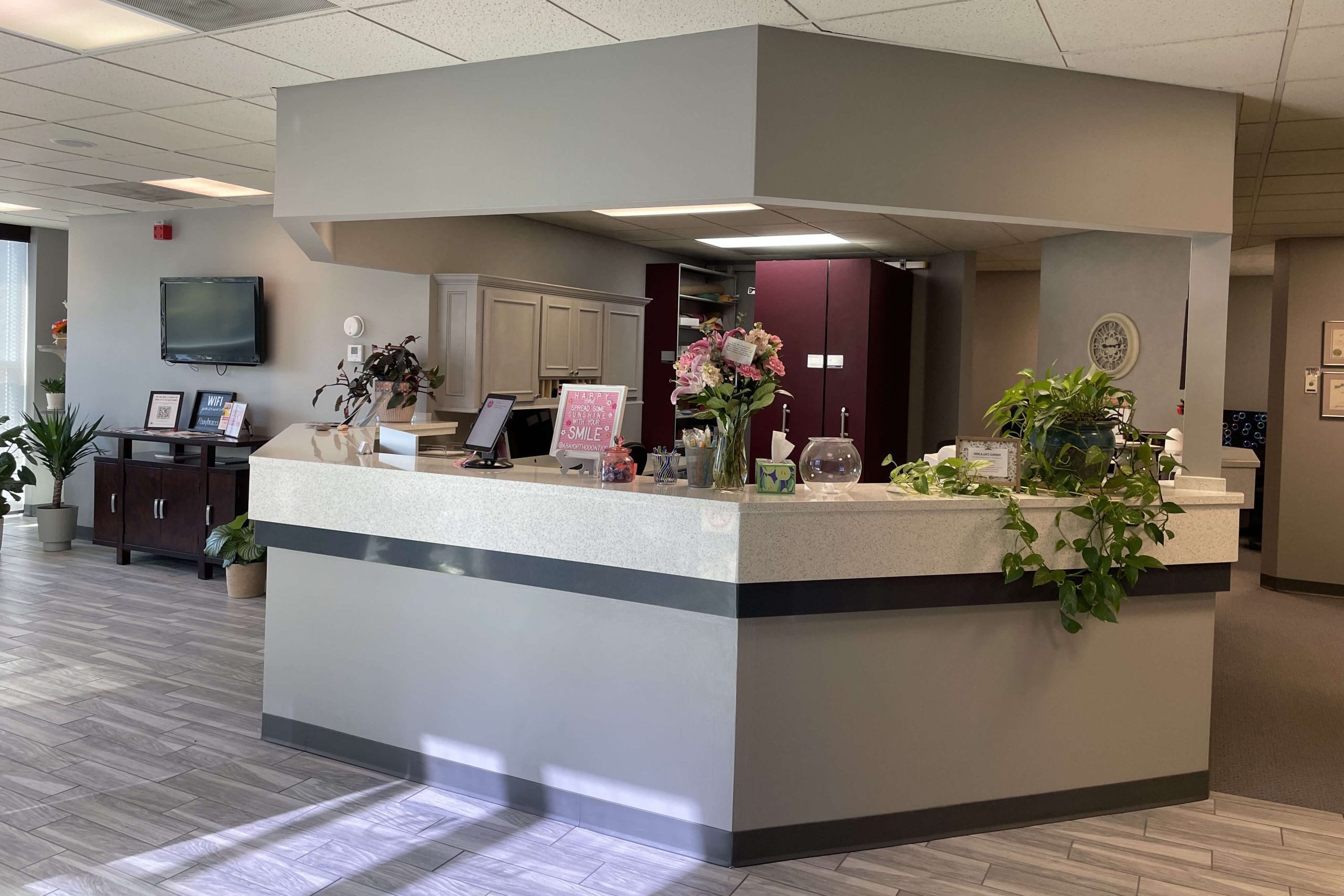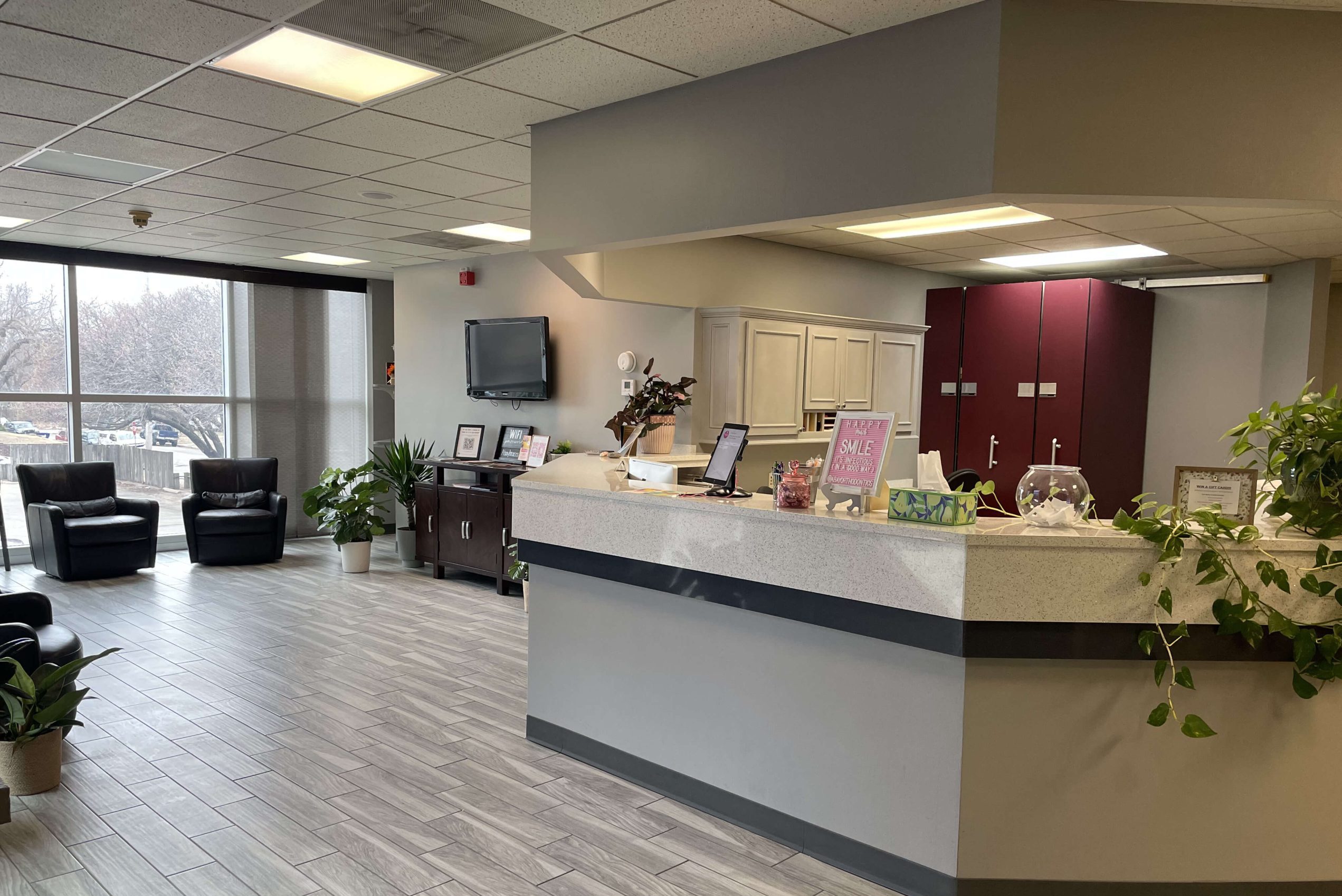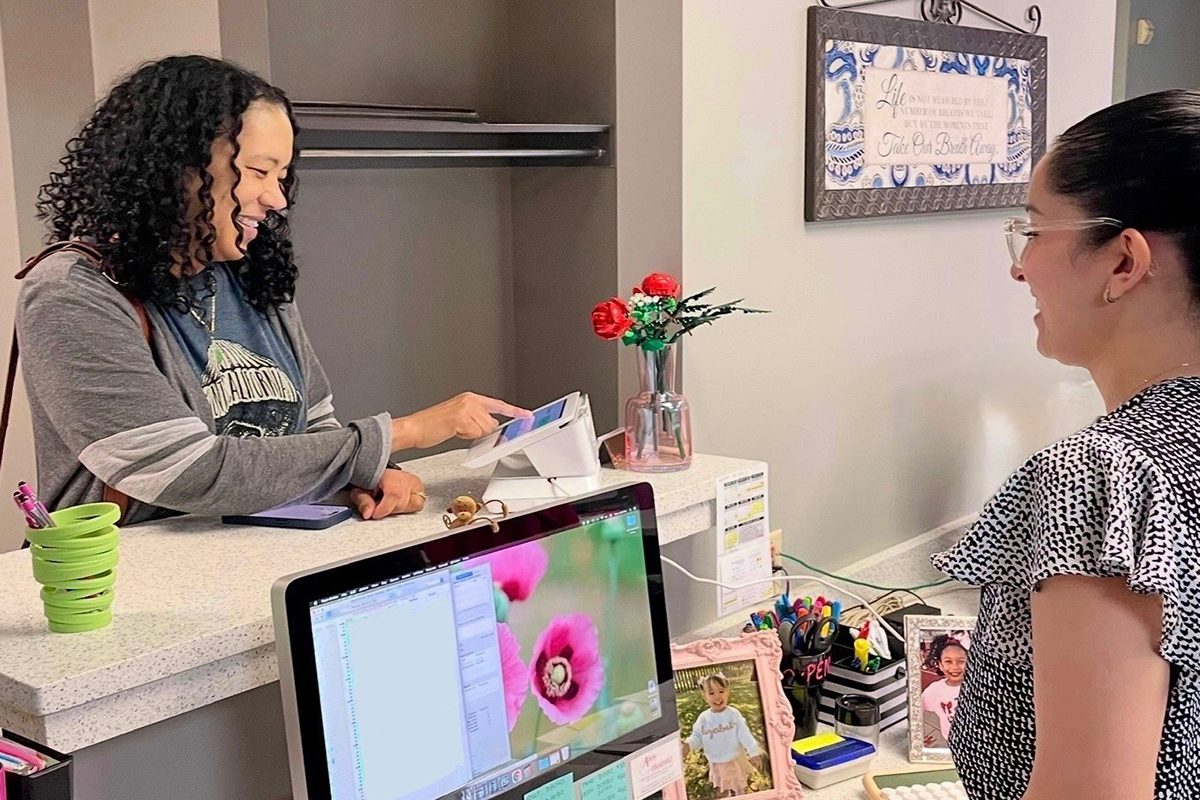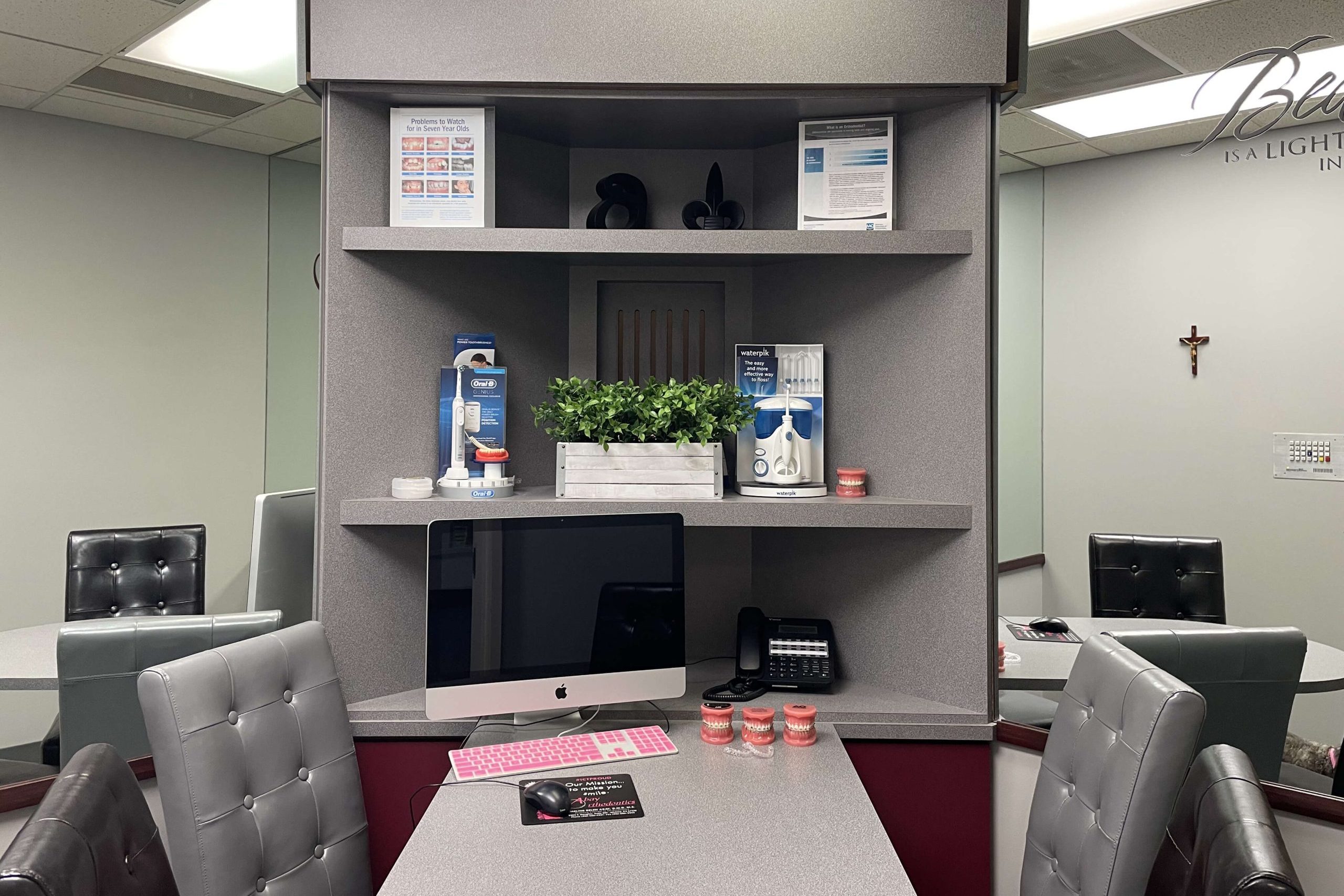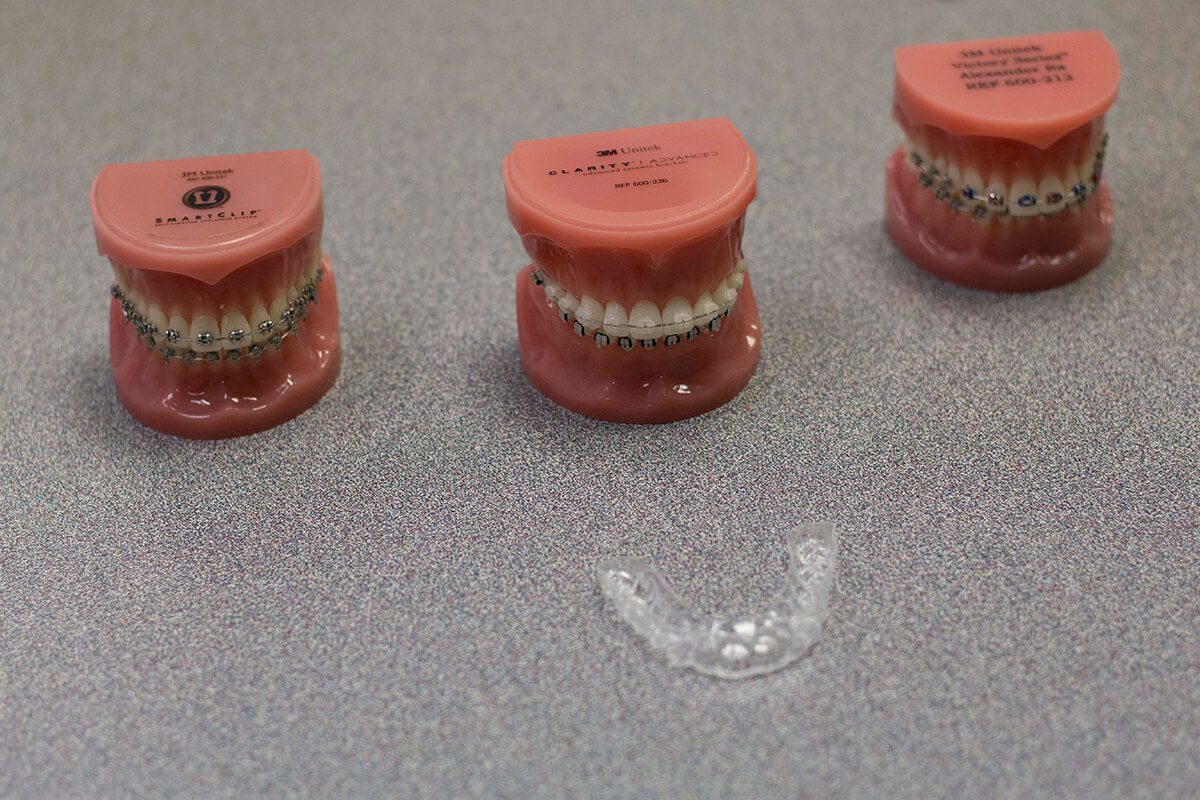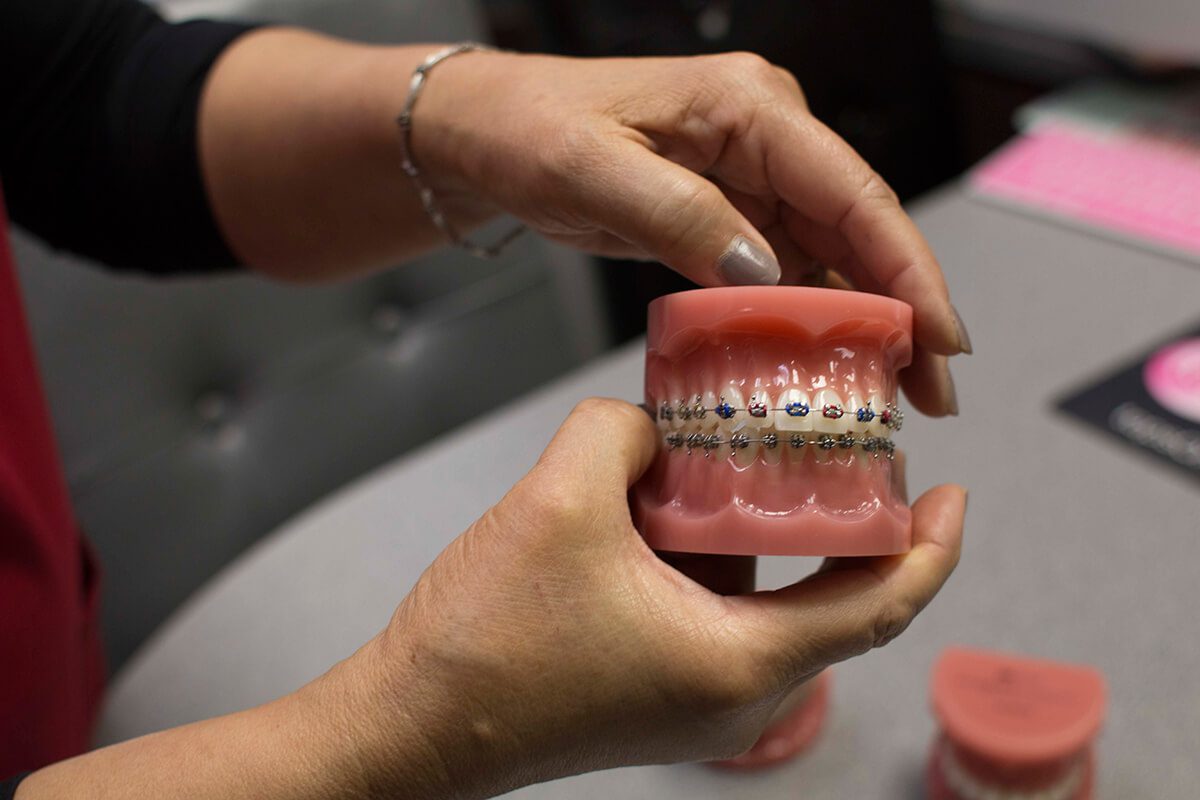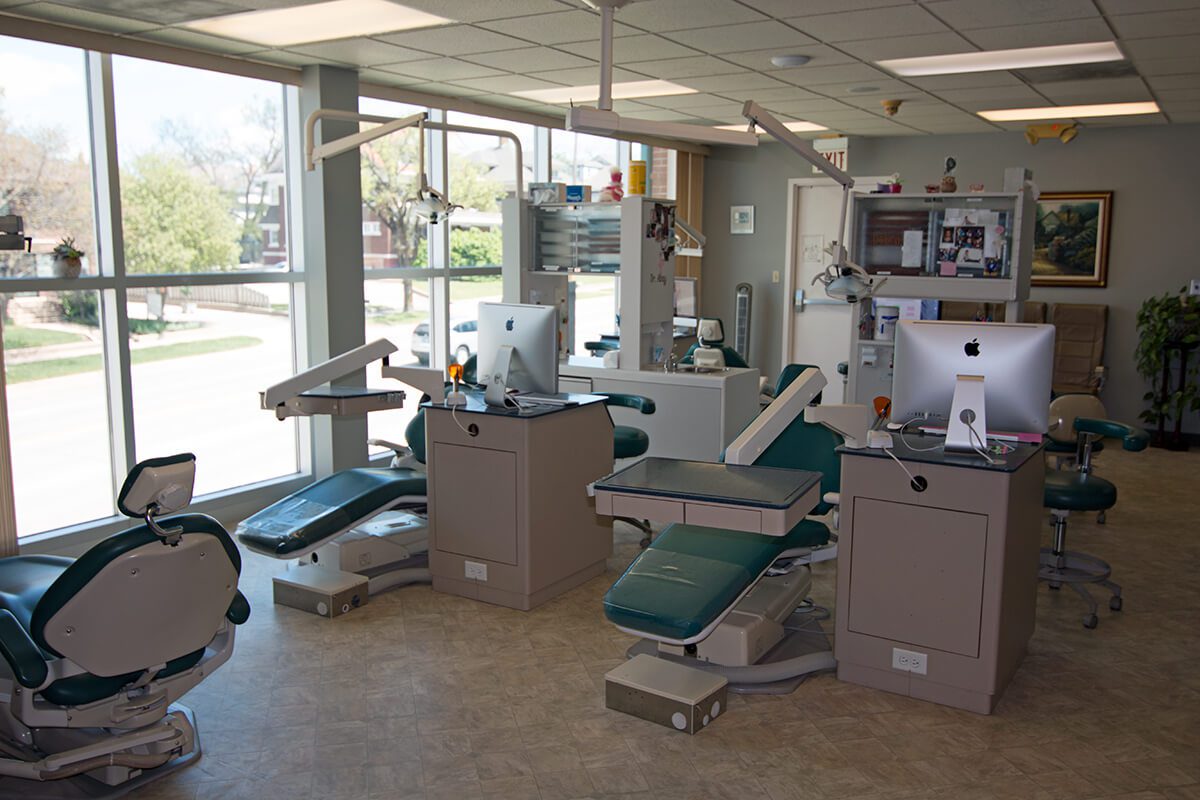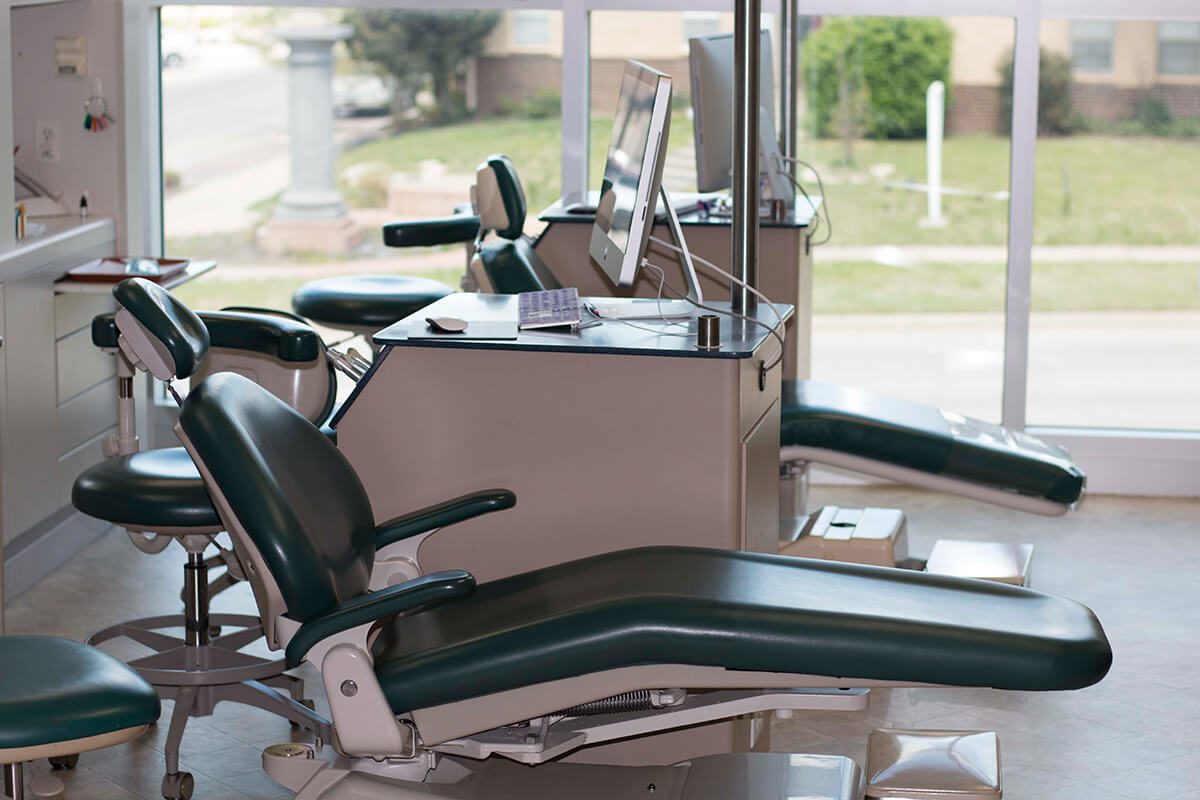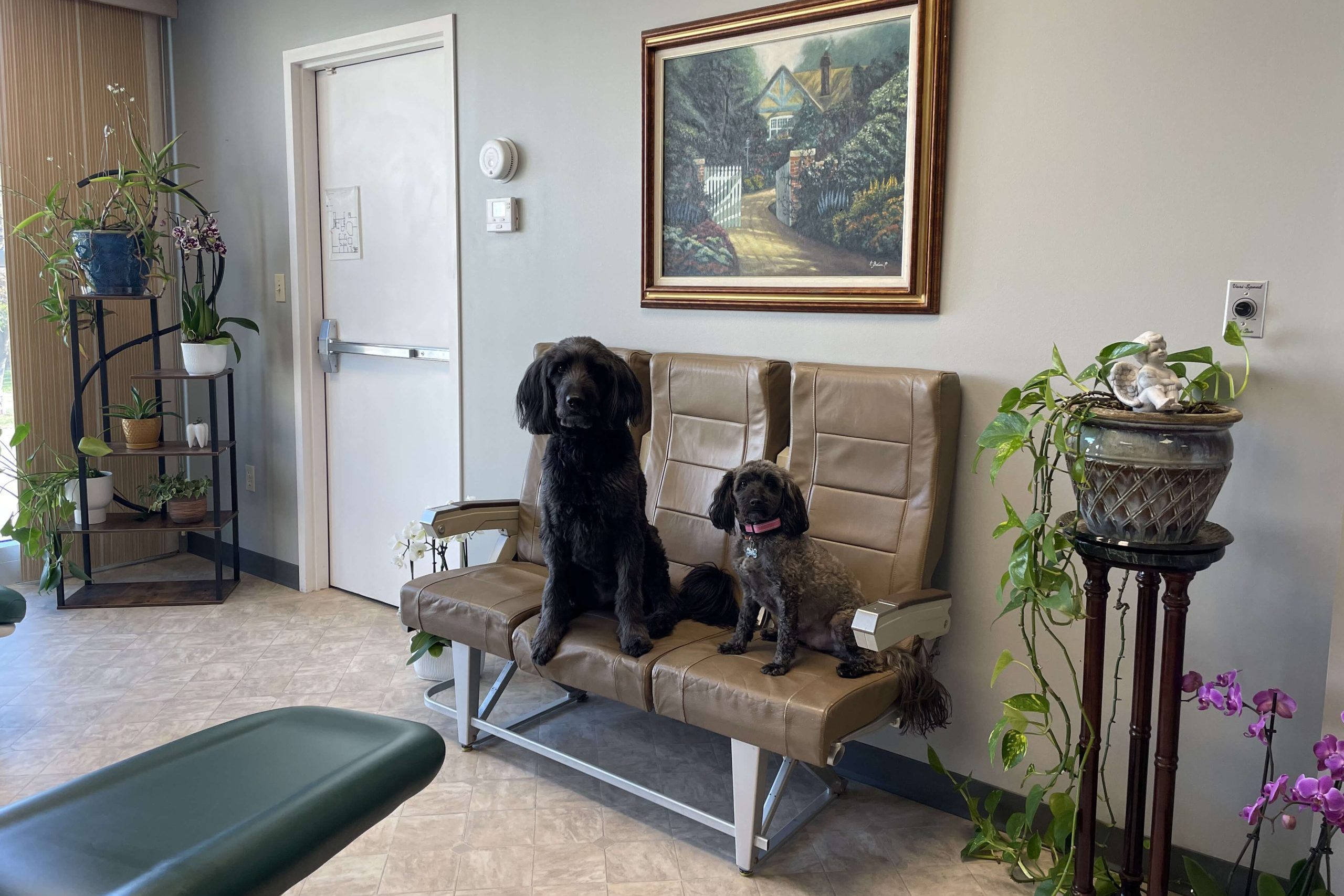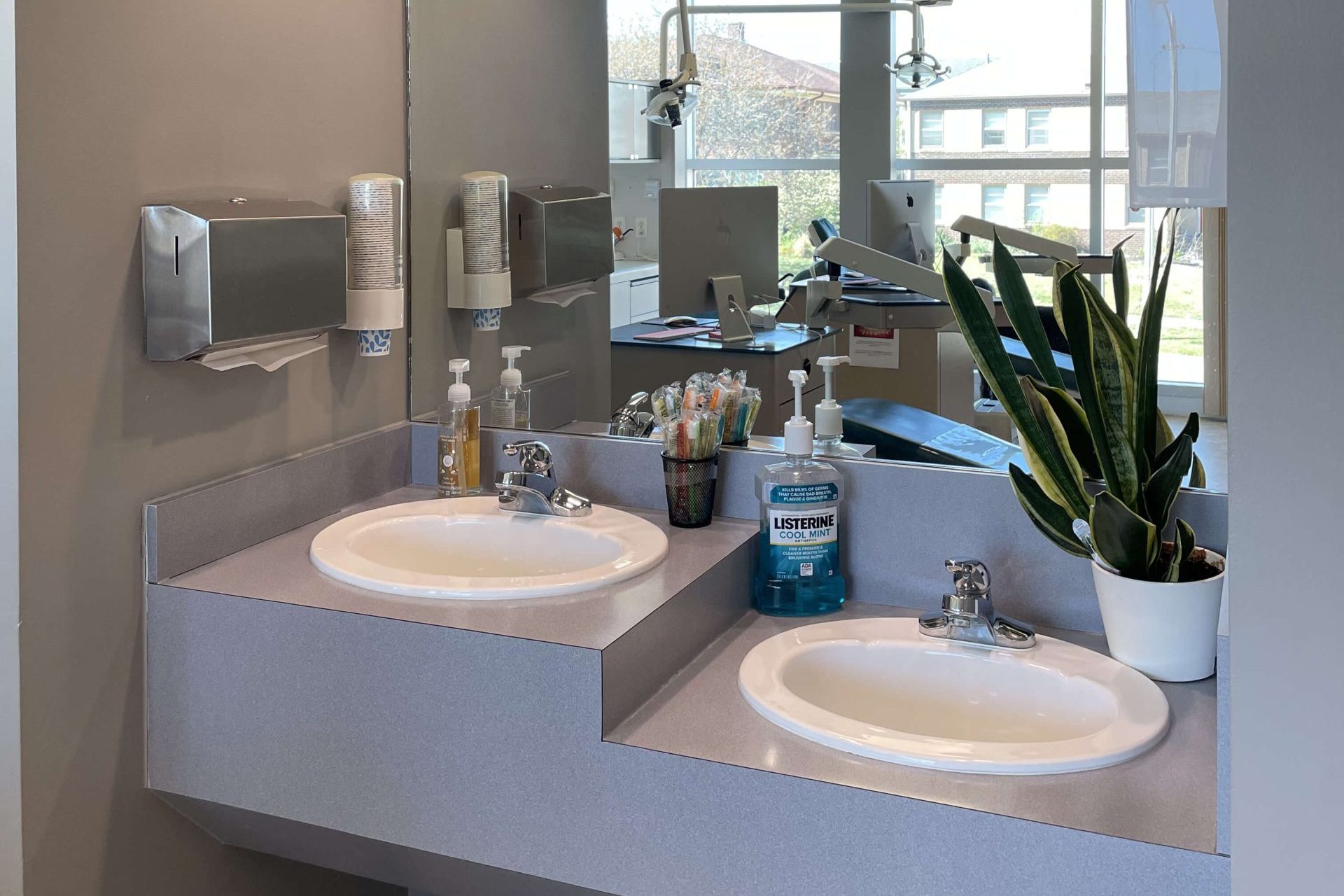Meet Our Doctors
Dr. Emeline Belen Abay, D.M.D., M.S.
Dr. Emeline Belen Abay is trained in the latest technology as a specialist in orthodontics. She has a Masters of Science Degree in Orthodontics from St. Louis University and also completed a three-year residency program at the Mayo Clinic. She has been in practice in Wichita since 1994 and in both faculty/clinical practice for two years previously.
Dr. Abay is a member of the American Association of Orthodontists, American Dental Association, Kansas Dental Association, Wichita District Dental Society, and World Federation of Orthodontists.
Dr. Abay is married to Dr. Eustaquio O. Abay II, a neurosurgeon. They have six children, Christine, Michael, Erl, Casey, Anthony and Emily, and a growing number of grandchildren.
Dr. Abay spends her leisure time cooking, traveling, visiting her children, and ballroom dancing with her husband. Committed to excellence in orthodontic care, Dr. Abay looks forward to sharing her many years of expertise with you.
Dr. Emily B. Abay, D.M.D., M.S.
Not only is Dr. Emily B. Abay the new associate orthodontist at Abay Orthodontics, but she is also the youngest daughter of Dr. Emeline Belen Abay.
Dr. Emily was born and raised here in Wichita, Kansas, and grew up coming into our same Abay Orthodontics office in College Hill – progressing from walking around and chatting with patients, to helping at the front desk, to shadowing procedures and appointments with educational intent, to now working alongside her mom. Both doctors are thrilled to be practicing together.
Dr. Emily attended the University of San Diego in Southern California for her undergraduate degree, received her dental training at Tufts University in Boston, Massachusetts and completed her orthodontic residency at Columbia University in New York City. With her education, Dr. Emily is well versed in the orthodontic specialty and is proficient in utilizing traditional braces as well as clear aligners for comprehensive treatment.
Dr. Emily is a member of the American Association of Orthodontists, American Dental Association, and is board certified by the American Board of Orthodontics.
Per her educational pursuits living across the country, Dr. Emily has always enjoyed new experiences and diverse interests. She believes this stems from the influence of her parents and five older siblings. Prior to practicing orthodontics, Dr. Emily was able to follow passions of working with children with special needs, dancing, and even cheering for one season in the NFL!
Following Dr. Abay’s model, Dr. Emily sees her patients at every visit, ensuring appropriate care, individual patient needs, and ideal treatment progression. Hoping to carry on the legacy of patients being treated like family, Dr. Emily is firmly committed to the Abay Orthodontics mission: to make you smile.
Dr. Emily B. Abay, D.M.D., M.S.
Not only is Dr. Emily B. Abay the new associate orthodontist at Abay Orthodontics, but she is also the youngest daughter of Dr. Emeline Belen Abay.
Dr. Emily was born and raised here in Wichita, Kansas, and grew up coming into our same Abay Orthodontics office in College Hill – progressing from walking around and chatting with patients, to helping at the front desk, to shadowing procedures and appointments with educational intent, to now working alongside her mom. Both doctors are thrilled to be practicing together.
Dr. Emily attended the University of San Diego in Southern California for her undergraduate degree, received her dental training at Tufts University in Boston, Massachusetts and completed her orthodontic residency at Columbia University in New York City. With her education, Dr. Emily is well versed in the orthodontic specialty and is proficient in utilizing traditional braces as well as clear aligners for comprehensive treatment.
Dr. Emily is a member of the American Association of Orthodontists, American Dental Association, and is board certified by the American Board of Orthodontics.
Per her educational pursuits living across the country, Dr. Emily has always enjoyed new experiences and diverse interests. She believes this stems from the influence of her parents and five older siblings. Prior to practicing orthodontics, Dr. Emily was able to follow passions of working with children with special needs, dancing, and even cheering for one season in the NFL!
Following Dr. Abay’s model, Dr. Emily sees her patients at every visit, ensuring appropriate care, individual patient needs, and ideal treatment progression. Hoping to carry on the legacy of patients being treated like family, Dr. Emily is firmly committed to the Abay Orthodontics mission: to make you smile.
What Is An Orthodontist?
Orthodontists are specialists in moving teeth and aligning jaws
- All Orthodontists are dentists first. On average out of 100 dental school graduates, only 6 will pursue the rigorous training and additional years of specialty education to become an orthodontist.
- It can take 10 or more years of education after high school to become an orthodontist. Orthodontists limit their scope of work to the orthodontic specialty alone – maintaining the skill set to manage even the most complex cases.
- Orthodontists use a variety of “appliances” including braces, clear aligner trays and retainers, to move teeth or hold them in their new positions.
- Orthodontists dedicate their lives to creating healthy, beautiful smiles in children, teens and adults.
Our Team
Our Office
Follow Us @abayorthodontics
General Frequently Asked Questions
1. What orthodontic treatments do you offer?
We offer a wide range of treatments, including traditional metal braces, Clarity ADVANCED Ceramic Braces, and Clear Aligners (such as Invisalign®). Our goal is to provide personalized solutions for every patient’s unique needs.
2. At what age should my child see an orthodontist?
It is best to start seeing an orthodontist at age 7 in order to begin monitoring loss of baby teeth and incoming permanent teeth. At this time orthodontists can recognize the potential need for treatment sometimes even starting preventative care.
3. Can adults benefit from orthodontic treatment?
Absolutely! Patients of any age can benefit from improved alignment and function. It's never too late to take care of your smile.
4. Why should I fix my crowded teeth?
Teeth that are crowded can be difficult to clean adequately. This could lead to cavities and gum disease.
5. How long does orthodontic treatment usually take?
The length of orthodontic treatment varies depending on the patient. For many cases it can take 18-24 months however, more complex cases require increased time as treatment must be coordinated with other specialists. It is best to have an in-person evaluation to determine your specific needs.
6. How do Clear Aligners differ from braces?
Braces are a fixed appliance that cannot be removed by the patient. Patients are seen at the office frequently (every 6-8 weeks) for adjustments. Clear aligners are removable and rely heavily on patient compliance. Aligners are worn at least 22 hours per day to achieve ideal results. Individual trays are changed weekly, depending on the patient's prescription schedule. Patients wearing aligners still come into the office but may be seen less frequently.
7. How much does orthodontic treatment cost?
Treatment cost varies depending on the patient. Patients must be seen for a clinical evaluation to determine what this cost entails.
8. Do Clear Aligners work for severe orthodontic issues?
Clear aligners can be used for a variety of treatment types however, more severe cases may necessitate the control provided by traditional brackets and wires.
11. How often do I need to visit during treatment?
Patients are typically seen on a 6-8 week frequency however, certain appliance adjustments may require sooner visits or can allow for more time between visits.
10. How can I book a consultation?
Please give our office a call or fill out the appointment request form found on our Contact Us page, and one of our staff members will schedule you for a complimentary consultation.
Braces Frequently Asked Questions
1. How do braces work?
2. How long does treatment with braces take?
3. Are braces painful?
4. Can I eat normally with metal braces?
5. How often will I need adjustments?
Aligners Frequently Asked Questions
1. How do clear aligners work?
Clear aligners use controlled force to gradually move teeth into their desired position. Each set of aligners is slightly different from the previous one, incrementally shifting your teeth according to your customized treatment plan. The aligners put gentle pressure on specific teeth at specific times to guide them into alignment.
2. Are clear aligners noticeable?
One of the primary benefits of clear aligners is their discreet appearance. Made from transparent, medical-grade plastic, they're near invisible when worn. Many people do not notice you're undergoing orthodontic treatment unless you tell them.
3. How long does clear aligner treatment take?
Treatment duration varies based on the complexity of your case and your compliance with wearing the aligners as directed. Treatment length is similar to traditional braces where most cases can take about 2 years, depending on how severe cases are at the start. During your consultation, we'll provide an estimated timeline specific to your needs.
4. Is clear aligner treatment painful?
Most patients experience mild discomfort or pressure for a few days when switching to a new set of aligners. This is a sign that the aligners are working to move your teeth. Any discomfort typically subsides within a few days and can be managed with over-the-counter pain relievers if necessary.
5. Can I eat and drink normally with clear aligners?
You'll need to remove your aligners before eating or drinking anything besides room temperature water. This prevents staining and damage to the aligners. After eating, brush your teeth or at least rinse before reinserting the aligners to maintain good oral hygiene.
6. How often do I need to wear my aligners?
For optimal results, clear aligners should be worn 22 hours per day. They should only be removed for eating, drinking, and oral hygiene routines.
7. What happens if I lose or break an aligner?
If you lose or break an aligner, contact our office immediately. Depending on how long you've been wearing that particular set, we may advise you to move to the next set in your series or order a replacement. Never move backward to a previous set without consulting us first.
8. How do I clean my aligners?
Clean your aligners daily by gently brushing them with a soft toothbrush, water and soap (or toothpaste). Avoid using hot water, which could warp the plastic. We also offer specialized cleaning products designed specifically for clear aligners.
9. Will clear aligners affect my speech?
Some patients experience a slight lisp when they first begin wearing clear aligners. This typically resolves within a few days as you adjust to wearing them.
10. Am I a good candidate for clear aligner treatment?
Clear aligners can effectively treat many orthodontic issues, including crowded teeth, gaps, and certain bite problems. However, they may not be suitable for extremely complex cases. During your consultation, we'll determine whether clear aligners are appropriate for your specific needs or if alternative treatments would better serve you.
11. What happens after my treatment is complete?
After completing your clear aligner treatment, you'll need to wear retainers to maintain your results. Initially, you'll wear retainers full-time, gradually transitioning to nighttime wear only. Consistent retainer use is essential for preventing teeth from shifting back to their pre-treatment positions.
12. How much does clear aligner treatment cost?
Hours of Operation
Abay Orthodontics is conveniently located for most of South Central Kansas – just five minutes from downtown Wichita.
Please feel free to contact our office and schedule a complimentary orthodontic evaluation. Use our online form here.


